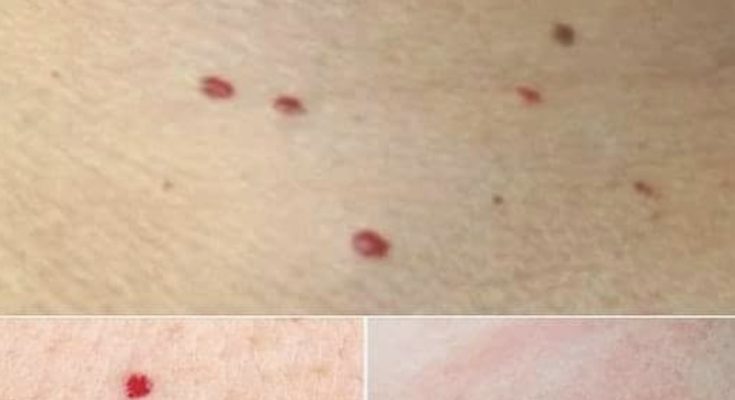
If you’re like me, you probably check your body often for any lumps, bumps, bruises, or anything else that seems unusual.
You might think I’m paranoid or overly cautious, but I prefer to be aware of what’s happening with my body, and I want to be prepared to seek medical help if I discover something that indicates an unusual change.
So, you can imagine my shock when I spotted a group of red dots on my shoulder one morning. As is often the case these days, I quickly turned to the internet to find out what it could mean.
It turns out that red dots on the skin are not that rare. In fact, there are several reasons for them, so I thought it would be useful to compile a list for anyone who might find themselves in a similar situation.
Now, it’s crucial to understand that red dots on the skin can vary in size, shape, and color, and their meanings can be quite diverse. Some are completely harmless, while others may indicate more serious issues.
Petechiae and Purpura
These appear as tiny red dots on the skin and are caused by damaged blood vessels or capillaries. They can result from stress, coughing, or certain medications. Generally, they are harmless, but they can signal underlying medical conditions like platelet disorders.
Cherry Angiomas
These look like small, raised, bright red bumps and are caused by an overgrowth of blood vessels. Cherry angiomas are mostly harmless and tend to become more common as we get older.

Heat Rash
This is simple and quite common depending on the weather. The ‘rash’ happens when sweat gets trapped in sweat ducts, leading to a pattern of itchy, red dots on the skin.
Allergic Reactions
This term is pretty straightforward. It refers to the body’s response to certain foods, substances, medications, or insect stings and bites, which can cause skin redness and an itchy rash.
Folliculitis
This is when hair follicles become inflamed, usually due to bacterial or fungal infections. The result is red dots filled with pus that can be uncomfortable.
Cellulitis
This is a bacterial infection of the skin that leads to redness and swelling, making the area feel warm when touched. Cellulitis often needs medical help and treatment with antibiotics.
Impetigo
This is a contagious bacterial infection that spreads easily among kids. Impetigo shows up as red sores that can open up, ooze fluid, and eventually form a crust.

Vasculitis
This condition involves inflammation of blood vessels. Vasculitis can cause red dots on the skin and may be related to autoimmune disorders or infections.
Hemangiomas
These are birthmarks caused by the unusual growth of blood vessels. Sometimes they might need medical treatment, but they are usually harmless.
In conclusion, seeing red dots on your skin doesn’t always mean there’s a serious issue. However, it’s crucial to get medical advice if:
Red dots come with fever, pain, or other discomfort.
The dots grow quickly in size, number, or intensity.
These dots are accompanied by other symptoms like fatigue, weakness, or dizziness.



